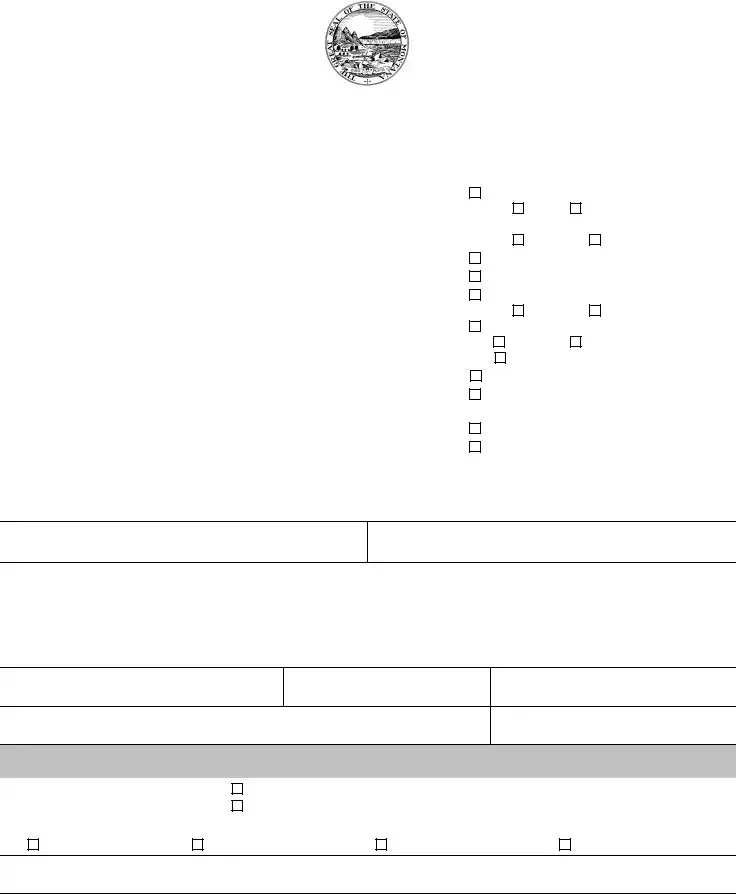The Montana W-9 form is closely related to the Federal W-9 Form, with its primary role being to provide a taxpayer identification number and certification for entities or individuals that engage in financial transactions that necessitate tax reporting. Both forms serve as a way to gather necessary information from vendors, contractors, or freelancers, ensuring that appropriate tax documentation can be generated, particularly the 1099 forms for independent contractors. By collecting details such as legal name, trade name, Taxpayer Identification Number (TIN), and entity type, they streamline tax reporting and compliance with IRS regulations.
IRS Form W-4, the Employee's Withholding Certificate, shares similarities with the Montana W-9 in terms of collecting taxpayer information. However, the W-4’s function is primarily for employers to determine the correct amount of federal income tax to withhold from employees' paychecks. While the W-9 is used to verify the taxpayer identification number and the individual’s status concerning backup withholding, the W-4 collects personal allowance information to adjust the tax withholding rate.
The Form 1099-MISC mirrors the Montana W-9’s goal of facilitating accurate tax reporting. The information provided on a W-9 allows payers to properly complete Form 1099-MISC, which reports non-employee compensation. The link between these documents is crucial; the payer uses the TIN or SSN provided on the W-9 to report the payments made to the IRS and the payee on the 1099-MISC, highlighting a direct connection in the tax reporting procedure for non-employee compensation.
Similar in purpose to the Montana W-9 is the Form W-8BEN, "Certificate of Foreign Status of Beneficial Owner for United States Tax Withholding and Reporting (Individuals)." While W-9 forms are used by U.S. persons, the W-8BEN is completed by non-U.S. persons to certify their foreign status and claim any applicable treaty benefits, including a reduced rate of, or exemption from, withholding as part of their financial activities within the U.S. Both forms help in asserting the payee’s tax status, but each applies to residents of different jurisdictions.
The relationship between the Montana W-9 and the Form 1099-INT is established through the requirement of taxpayer information for accurate interest income reporting. Banks and financial institutions use the details provided on a W-9, such as the individual or entity's TIN, to issue a 1099-INT form correctly. This form reports interest income to the IRS, connecting the requirement for accurate identification information with the duty of reporting certain types of income.
The State Resale Certificate shares a procedural similarity with the Montana W-9, as both are used in transactions to verify a party’s information for tax purposes. Resale certificates are used by businesses to purchase goods intended for resale without paying sales tax at the point of purchase. The transparency and accountability in tax-related information, as seen with the TIN verification on a W-9, are central to both documents, albeit serving different ends in tax responsibility and compliance.
Form 1040, the U.S. Individual Income Tax Return, although more comprehensive, connects with the Montana W-9 through the necessity of reporting accurate taxpayer identification. The information provided on a W-9 may affect the reporting and taxation of income that individuals must disclose on their Form 1040. Which income is subject to report and tax might be partly determined based on documentation like the 1099 forms, which rely on the information provided by the W-9.
Akin to the W-9's function in business and tax documentation, the Form SS-4, Application for Employer Identification Number (EIN), is another vital link in the tax reporting chain. Businesses often need an EIN for tax purposes, which is used in various business activities and reporting obligations. The details an entity provides on a W-9, including its EIN, play a direct role in ensuring that transactions are properly reported to the IRS, underlining their connection in business identification and tax compliance.
The Form 8822, Change of Address, aligns with the W-9 in ensuring that the IRS has up-to-date information. While the primary role of the W-9 is to verify TINs, keeping current addresses is crucial for correct document delivery, such as tax return filings and correspondences. The necessity for updated information for tax compliance and communication purposes links these forms in administrative functionality.
Lastly, the Form 8832, Entity Classification Election, relates to the Montana W-9 by detailing the tax classification of entities. An LLC, for example, might use Form 8832 to elect its tax treatment (as a corporation, partnership, or disregarded entity), which then informs how it should be treated on the W-9. Understanding the entity’s classification helps in correctly completing the W-9 and ensuring that tax reporting and liability reflect the entity’s current status.
